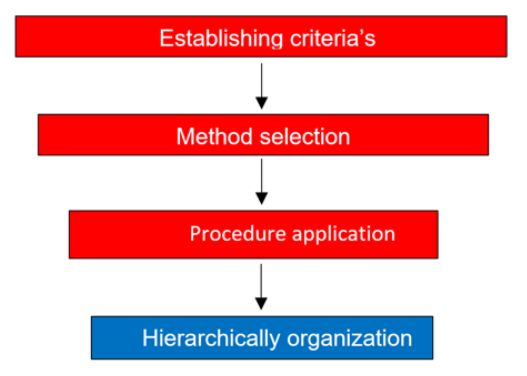Actions to Solve Failures in Critical Technological Equipment’s on Cuban Enterprise
Main Article Content
Abstract
The objective of this research was to propose actions for the solution of failures in critical equipment of the Unit of Capsules and Suspensions of the Pharmaceutical Laboratory "8 de Marzo". Initially, the most critical assets were identified from the application of a technology for the hierarchy of systems and technological assets for biopharmaceutical companies. For this, techniques from the field of research were used such as bibliographic search, document review, technology for the priority order of systems and technological assets in biopharmaceutical companies; in addition to Pareto analysis and Cause-Effect Diagram; applying the latter to equipment failures. Brainstorming work sessions were organized with the workers of the laboratories, maintenance department and the group of experts, yielding as the main conclusion of 8 actions to solve the problems of failure of the most critical assets and consequently the reduction of stops for this concept and its corresponding improvement in the general availability of the plant.
Article Details

This work is licensed under a Creative Commons Attribution-NonCommercial 4.0 International License.
Those authors that have publications with this journal accept the following terms:
1. They will retain their copyright and guarantee the journal the right of first publication of their work, which will be simultaneously subject to the License Creative Commons Attribution-NonCommercial 4.0 International (CC BY-NC 4.0) that allows third parties to share the work whenever its author is indicated and its first publication this journal. Under this license the author will be free of:
• Share — copy and redistribute the material in any medium or format
• Adapt — remix, transform, and build upon the material
• The licensor cannot revoke these freedoms as long as you follow the license terms.
Under the following terms:
• Attribution — You must give appropriate credit, provide a link to the license, and indicate if changes were made. You may do so in any reasonable manner, but not in any way that suggests the licensor endorses you or your use.
• NonCommercial — You may not use the material for commercial purposes.
• No additional restrictions — You may not apply legal terms or technological measures that legally restrict others from doing anything the license permits.
2. The authors may adopt other non-exclusive license agreements to distribute the published version of the work (e.g., deposit it in an institutional telematics file or publish it in a monographic volume) whenever the initial publication is indicated in this journal.
3. The authors are allowed and recommended disseminating their work through the Internet (e.g. in institutional telematics archives or on their website) before and during the submission process, which can produce interesting exchanges and increase the citations of the published work. (See the Effect of open access).
References
ACUÑA, B.; MIRIAM, Y.B.: Cómo se elabora el proyecto de investigación, 6ta. ed., Caracas, Venezuela, 248 p., 2006, ISBN: 980-6293-03-7.
AGUILAR-OTERO, J.R.; TORRES-ARCIQUE, R.; MAGAÑA-JIMÉNEZ, D.: “Análisis de modos de falla, efectos y criticidad (AMFEC) para la planeación del mantenimiento empleando criterios de riesgo y confiabilidad”, Tecnología, Ciencia, Educación, 25(1): 15-26, 2010, ISSN: 0186-6036.
ASTIGARRAGA, E.: El método Delphi, Ed. Universidad de Deusto, vol. 14, San Sebastián, 2003.
DEL CASTILLO-SERPA, A.; BRITO-BALLINA, M.; FRAGA-GUERRA, E.: “Análisis de criticidad personalizados//Analysis of Criticity Personalized”, Ingeniería Mecánica, 12(3): 1-12, 2009, ISSN: 1815-5944.
DÍAZ, C.; BENÍTEZ, M.: “Los análisis de criticidad en el MCC: Particularidades de diferentes modelos”, Revista Mantenimiento en Latinoamérica, 4(4): 24-32, 2012.
DIAZ-CONCEPCION, A.: Tecnología para el análisis de la confiabilidad operacional en sistemas técnicos complejos, Universidad Tecnológica de La Habana, CUJAE, Tesis presentada en opción al grado científico de Doctor en Ciencias Técnicas, La Habana, Cuba, 2019.
ENRIQUES-GASPAR, A.: Propuesta de tecnología para la jerarquización de los sistemas y activos tecnológicos en empresas biofarmacéuticas, Universidad Tecnológica de la Habana, CUJAE, La Habana, Cuba, 169 p., 2019.
ENRIQUES-GASPAR, A.; DÍAZ-CONCEPCIÓN, A.; VILLAR-LEDO, L.; DEL CASTILLO-SERPA, A.; RODRÍGUEZ-PIÑERO, A.J.; ALFONSO-ÁLVAREZ, A.: “Tecnología para el análisis de criticidad de los sistemas tecnológicos en empresas biofarmacéuticas”, Ingeniería Mecánica, 23(1), 2020, ISSN: 1815-5944.
GOC-116-2017: “Resolución 116_2017 Mtto. industrial”, 2017, ISSN: 0864-0793, e-ISSN: 1862-7511.
GÓMEZ-PÉREZ, A.; CABRERA-GÓMEZ, J.; CONCEPCIÓN, A.; BLANCO-ZAMORA, Y.: “Herramienta Informática para el análisis de criticidad de activos: Modelos personalizados”, Ingenierías, 19(71): 4, 2016, ISSN: 1405-0676.
GRAJALES, D.H.; CANDELARIO, P.M.; SÁNCHEZ, O.Y.: “La confiabilidad, la disponibilidad y la mantenibilidad, disciplinas modernas aplicadas al mantenimiento.”, Scientia et technica, 1(30): 155-160, 2006, ISSN: 0122-1701.
HERNANDEZ-SAMPIERE, R.F.C.; BAPTISTA-LUCIO, P.: Metodología de la Investigación, Ed. Interamericana, México, 2006.
HURTADO DE MENDOZA-FERNÁNDEZ, S.: “Criterio de expertos. Su procesamiento a través del Método Delphi”, 2012.
KARDEC, A.; NASCIF, J.: Mantenimiento función estratégica, Ed. Editorial Qualitymark, 2da. ed., Rio de Janeiro, Brasil, 328 p., 2002.
MARTÍNEZ, P.: Mantenimiento Industrial. Conceptos y aplicaciones, Ed. Editora MINAZ, La Habana, Cuba, 2017, ISBN: 978-959-261-526-7.
PAREDES-GALINDO, A.: Análisis de la falla más crítica en las unidades de bombeo de la Empresa de Perforación y Extracción de Petróleo del Centro. Recomendaciones para su erradicación., Inst. Universidad Tecnológica de La Habana, Centro de Estudios de Ingeniería de Mantenimiento, La Habana, Cuba, 73 p., 2015.
PCC-CUBA: Lineamientos de la política económica y social del Partido y la Revolución para el período 2016-2021, Ed. Partido Comunista de Cuba, La Habana, Cuba, 2016.
